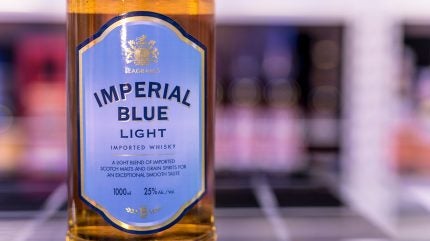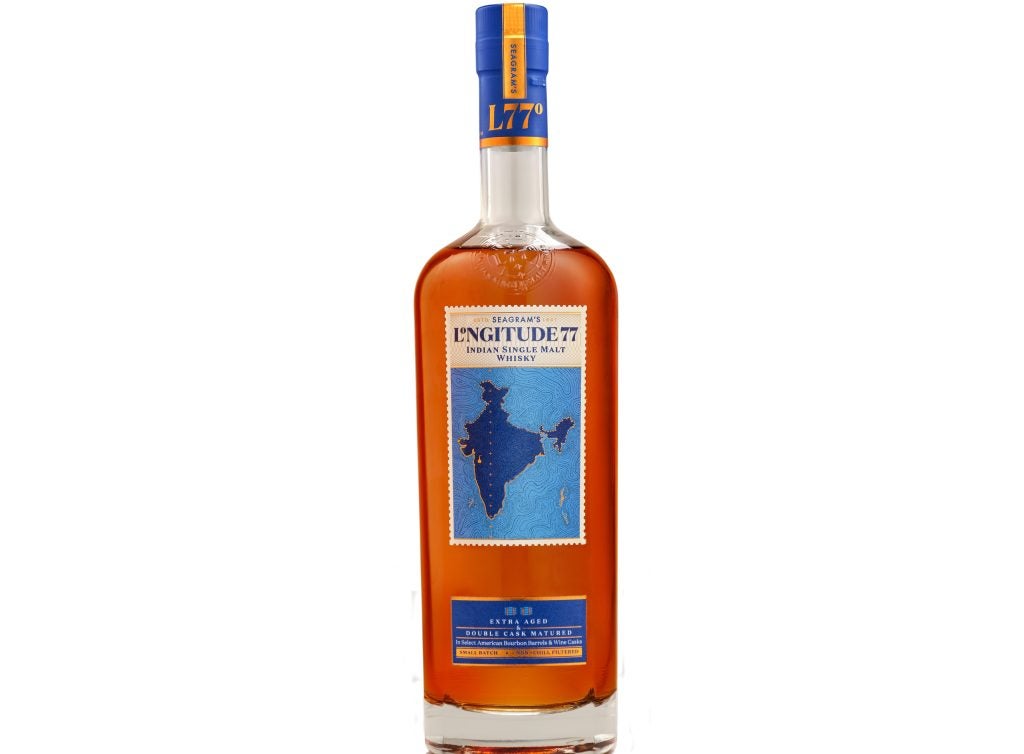
Almost a quarter of a century ago, when Diageo and Pernod Ricard divvied up the Seagram drinks empire, most of the attention was focused on the destinies of the marquee brands: Captain Morgan and Crown Royal going to Diageo; Martell, Chivas Regal and The Glenlivet snaffled by Pernod. Few commentators gave much thought to a rather less high-profile part of the Seagram business: its operations in India.
Seagram’s sizeable investments in the sub-continent laid the foundations for Pernod Ricard to establish an enviable position in the market: more than 20 production units scattered across the country; a portfolio of high-volume IMFL or ‘admix’ whisky brands including Imperial Blue, Royal Stag and Blenders Pride, plus BII (bottled in India) Scotch in 100 Pipers – and, of course, BIO (bottled in origin) imports.
But now, we hear via unconfirmed but detailed reports, Pernod Ricard is looking to offload Imperial Blue, which sits in what it terms the ‘value’ segment of the whisky market, with an equivalent price of about €7 ($8.27) a bottle. This is a brand that, according to reports, sold nearly 23m nine-litre cases in 2023 – admittedly down on its 2019 peak of over 26m cases, but still a pretty handy number.
Neither Pernod Ricard nor the reported bidders for Imperial Blue – including Suntory, Tilaknagar Industries and Inbrew Beverages – will comment on the reports, but a conversation I had this week with Simon de Beauregard, chief transformation officer at Pernod Ricard India, sets the rumoured deal in the broader context of the market.
For a start, there’s de Beauregard’s job title. I don’t generally have much truck with ‘blue sky thinking’ monikers like chief transformation officer but in this case the choice of words is instructive. The high-potential Indian market – placed in sharp relief as growth becomes so elusive elsewhere – is transforming, and on multiple fronts.
This is still a high-volume market – it’s Pernod Ricard’s biggest in those terms – but it has also become, over the past couple of fiscals, the company’s second-largest in terms of net sales. That’s reflected in the fact that, as you ascend the pricing ladder for whisky from Imperial Blue (value) through Royal Stag (deluxe) to Blenders Pride (premium), you can add two percentage points of extra growth for each step.

US Tariffs are shifting - will you react or anticipate?
Don’t let policy changes catch you off guard. Stay proactive with real-time data and expert analysis.
By GlobalDataIn this context, it’s no surprise that Pernod Ricard has moved to innovate with a number of higher-priced expressions in India, from Royal Stag Double Dark to Blenders Pride Four Elements – and, most interestingly of all, Longitude 77.
Whereas the first two are essentially higher-priced spin-offs of what we might term ‘legacy’ brands, Longitude 77 is an Indian single malt, wearing its provenance on its sleeve, both in terms of the name – the line that runs through the heart of the nation – and its label, featuring the country’s familiar outline. It’s a product that – literally – puts Indian whisky on the map.
This reflects a consumer shift that we’ve discussed previously: first of all, Indians may well – and do – aspire to buy and drink Western brands. After all, the market is already the second-largest destination for Jameson and The Glenlivet, even before the latter is boosted by the impact of the recently announced free trade agreement between India and the UK. But people are also increasingly demanding homegrown products that can match imports in terms of quality, packaging, branding – and price.
Longitude 77 – a no-age statement whisky – is priced close to The Glenlivet 12 Year Old in India. A decade ago, the mere idea of that pricing strategy would have been laughable but no longer. As de Beauregard says: “I think we went from ‘imported is cool’ to ‘local can be very cool as well’.”

Credit: Pernod Ricard
Nor is this merely a whisky story. Indian consumers – especially the urban, middle-class, young-LDA adults that Western brands are so keen to court – are becoming much more exploratory and experimental. De Beauregard believes this has its roots in what he calls “qualitative changes in the perception of alcohol”.
What does this mean? A product that was somehow still ‘taboo’ to many – largely consumed out of the home and by men – has become more permissible, breaking through barriers of age and gender, boosted further by an increasingly sophisticated on-trade and retail sector.
De Beauregard sees this in Pernod Ricard’s own consumer research. Where most people would previously have participated in maybe one-and-a-half categories – mainly whisky, but occasionally brandy, beer or rum – now they might be trying gin, single malt or agave spirits. And all of these – including agave – now have their domestic equivalents.
The transformation of India is also reflected in Pernod Ricard’s recent investments in the market – most notably, the construction of what is billed as Asia’s largest malt distillery and maturation facility in Nagpur – a plant that, when complete, will have a production capacity of 13m litres of pure alcohol a year, and which is part of a ten-year investment programme in Maharashtra worth a total of Rs17.85bn ($208.7m).
Pernod Ricard isn’t alone in both ramping up and diversifying its investments in India and fine-tuning its strategy there. Hence Diageo’s move to wholly acquire Goa-based distiller Näo Spirits in June and hence the same company’s decision in 2022 to sell off a slew of low-margin local brands to Inbrew, including White Mischief, Old Tavern and Romanov.
For all its opportunities and potential – and again we’ve said this before – India remains a complicated and at times frustrating country in which to do business. Pernod Ricard’s own, ongoing difficulties with the authorities in Delhi are testament to that. Commenting more generally on trading conditions in the country, de Beauregard says: “I was in the US before – but I think India is more complex than the US.”
India is also moving fast, so much so that – assuming that the reports are accurate and the deal goes ahead – Pernod Ricard’s sale of Imperial Blue, which would have been unthinkable only a few years back, begins to look eminently justifiable, bearing in mind current and likely future market conditions.
Yes, well over 20m cases is a lot of volume to lose but Imperial Blue – in its positioning, its price and even its name, with those echoes of empire – could soon be seen as something of a relic of India’s past, rather than a harbinger of this fascinating market’s increasingly diverse and exciting future.




